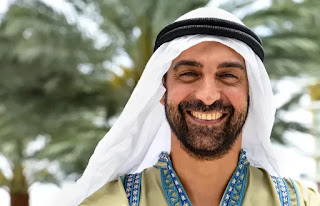
The turban is a long (10 plus feet) rectangular piece of cloth wrapped around the head or over a skullcap. The arrangement of the folds in the cloth are particular to each region and culture. The turban is traditional among men in North Africa, Iran, Afghanistan, and other countries in the region.

The izar is a wide band of patterned cotton cloth is wrapped around the waist and tucked into place, in the fashion of a sarong. It is common in Yemen, the United Arab Emirates, Oman, parts of the Indian subcontinent, and South Asia.

In the Indian subcontinent, both men and women wear these long tunics over loose trousers in matching suits. Shalwar refers to the pants, and kameez refers to the tunic portion of the outfit.

The serwal are white cotton pants are worn beneath the thobe or other types of men's gowns, along with a white cotton undershirt. They may also be worn alone as pajamas. Serwal has an elastic waist, drawstring, or both. The garment is also known as mikasser.

The bisht is a dressier men's cloak sometimes worn over the thobe. It is particularly common among high-level government or religious leaders, and on special occasions such as weddings.

The ghutra is a square or rectangular headscarf worn by men, along with a rope band (usually black) to fasten it in place. It is usually white or checkered in red/white or black/white. In some countries, this is called a shemagh or kuffiyeh. The egal (rope band) is optional.

The thobe is a long robe worn by Muslim men. The top is usually tailored like a shirt, but it is ankle-length and loose. It is usually white, but may also be found in other colors, especially in winter. It is called the dishdasha (such as is worn in Kuwait) or the kandourah (common in the United Arab Emirates).
Hover over each of the pictures to get details of men's clothing..